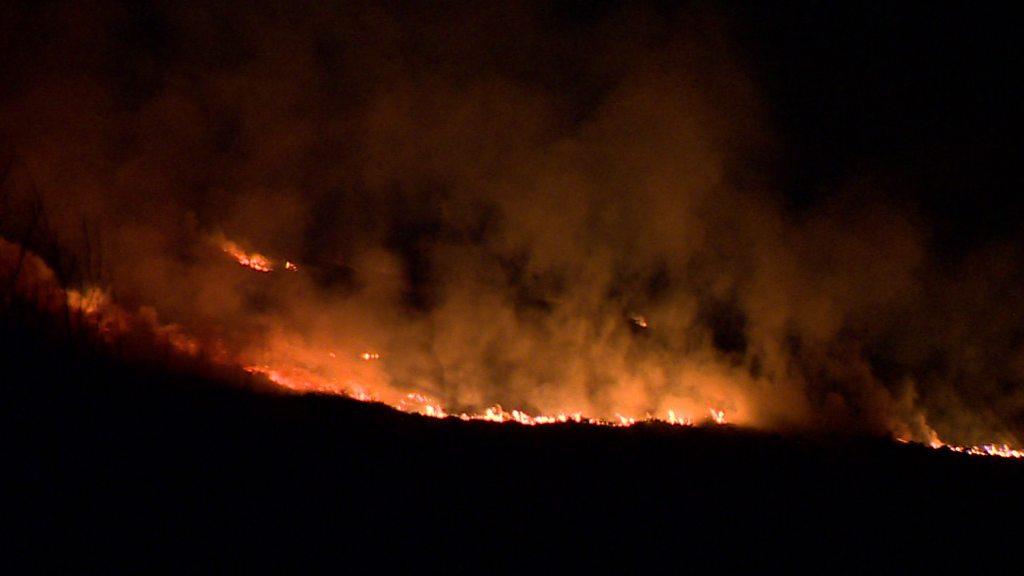Wildfires in Northern Ireland and their environmental cost
- Published
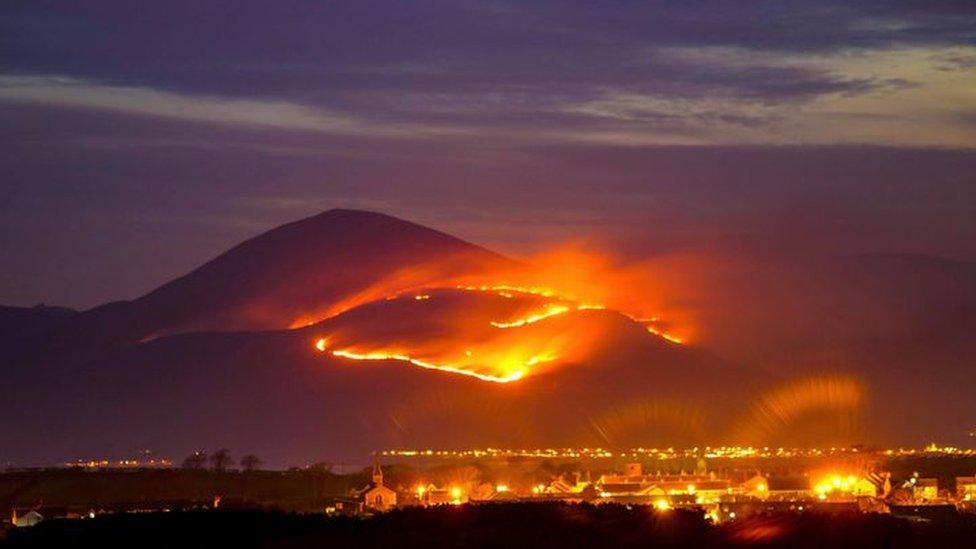
A large gorse fire blazed across the Mourne mountains in April 2021
While warm, dry weather is welcomed by many, it is almost inevitable that wildfires will follow.
There has been a spate of gorse fires in Cave Hill and the Black Mountain in Belfast and the Mourne Mountains in County Down - all believed to be deliberate.
The Mournes are still recovering from a blaze in April 2021 that engulfed the slopes of its highest mountain, Slieve Donard.
How much damage do these fires do to wildlife and the environment and can we prevent them or mitigate their harm?
Figures from the Northern Ireland Fire and Rescue Service (NIFRS) show that crews tackled 1,872 gorse fires between 1 April 2021 and 24 March 2022.
Almost three months into 2022 and firefighters have been battling blazes all week.
Group commander Mark Smyth says the effect on the environment and wildlife is a "major concern" - and they are rarely an accident.
"We have very few natural fires that happen in the wild in Northern Ireland," he says.
'Like tinder'
Deliberate wildfires may be a serious problem but they are not a new one, according to conservationist Jim Bradley.
"There were reports in the newspapers in the 1800s about deliberate fires being set."
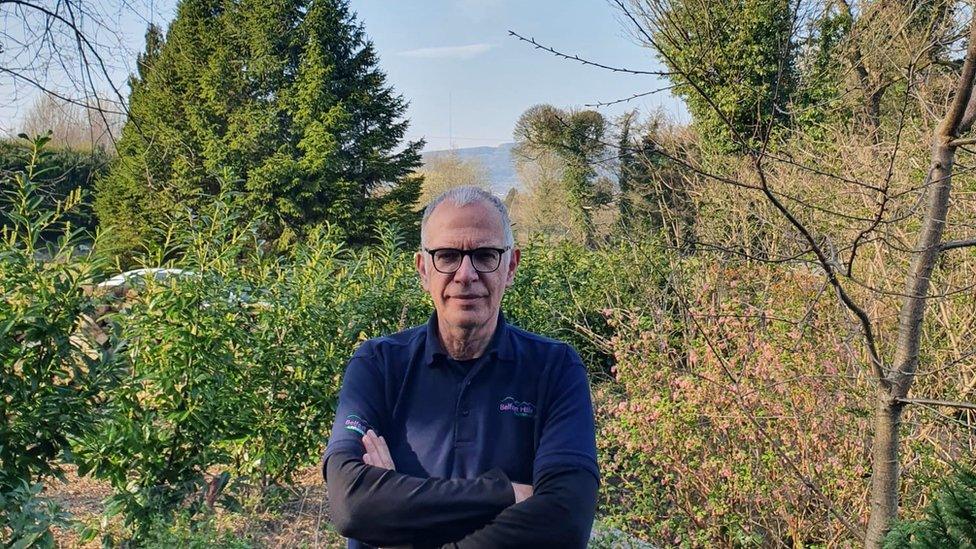
Jim Bradley wants Northern Ireland to look to how other countries are dealing with bigger fires
Mr Bradley, who heads up the Belfast Hills Partnership says that, even after 17 years of working in Cave Hill, he has been shocked by the extent of the latest fires.
"We've had warm weather as well as easterly winds - which are very drying," he said.
"If we get winds for more than a few days then that upper level of heather, particularly the dead bits, are like tinder and that's why we see a sudden spate of wildfires of very combustible materials."
The most immediate environmental concern is the impact on wildlife and vegetation.
"There's a number of different habitats hit by wildfires," he says.
"The primary one is the upland heathland and to a lesser extent the blanket bog."
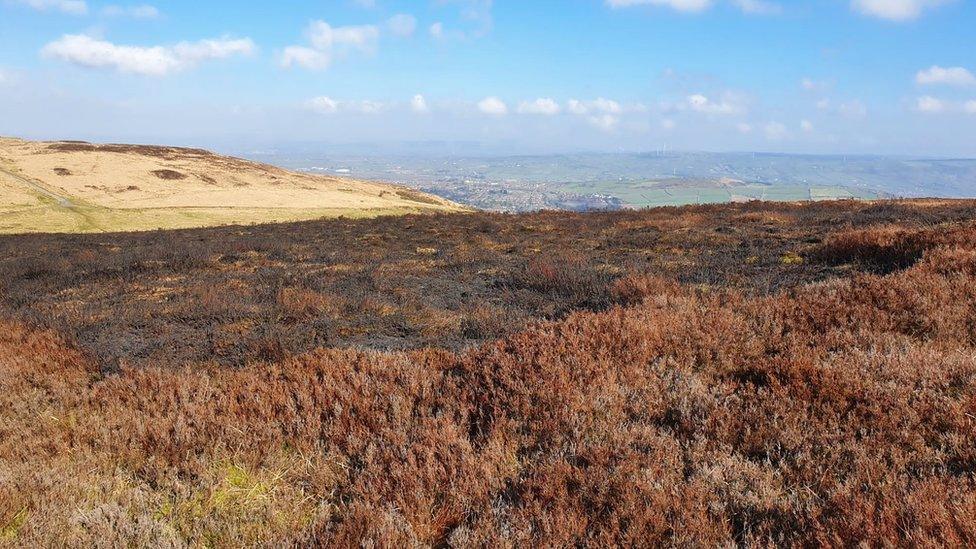
Scorched heather on Cave Hill in Belfast
Ground-nesting birds like meadow pipits and skylarks can be found on the summits of Belfast's hills.
Mr Bradley and his team have been surveying the burnt area to establish how many nesting birds there are and found multiple areas of nesting territories.
"There is also a lizard population, frogs and other birds that are up there as well."
Some damage can be superficial but some can have long-term effects on the ecosystem.
"Depending on the time of year and the severity of the burn, the sites may recover fairly quickly," he says.
"Later on in the season and when the fire goes right into the turf, then you can get severe long-term damage.
"If that's repeated over a number of years you start to get permanent changes to the habitat."

Belfast's Cave Hill was one of two sites in the city scorched by fires this week
He warns it is possible wildfire seasons may get earlier and Northern Ireland can learn from those countries who have to deal with much larger wildfires.
"We're trying to do our best in terms of managing sites so there's less dead vegetation, which makes it easy for a fire to take a hold," he adds.
Another concern is localised air pollution from the smoke that reaches residential areas.
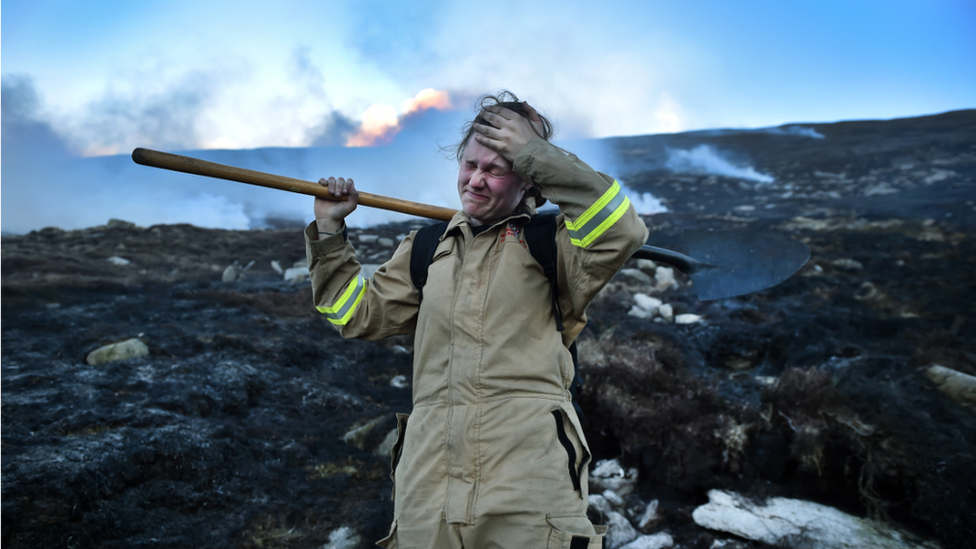
This picture, which went viral, epitomised the arduous conditions faced by firefighters in the Mournes in 2021
Stormont funding of £322,000 was committed to help the Mourne mountains recover after 2021.
One person who has been at the forefront of the recovery effort is National Trust lead ranger Marc Vinas.
He says this week's fires were not unexpected.
"We got a warning of risk of wildfire because the last week has been dry - and coming out of winter when all the dead vegetation is dry is peak conditions for wildfires," he explains.
One of the difficulties in places like the Mournes can be fire crews accessing the steep terrain.
'Grazing on fuel'
The Mournes are an Areas of Special Scientific Interest (ASSI) and fire can threaten that special biodiversity.
Mr Vinas says last year's fires are still having an impact on the heather.
"It is regenerating now but is going to take years to come back as it was.
"One environmental impact is that we can lose those habitats and their unique condition.
"In the short term, you lose everything. Then when recovery comes those habitats come back in a different way.
"Some species are more resilient to fire and they come back quicker and if you have just one dominant species, it's is not good for biodiversity."
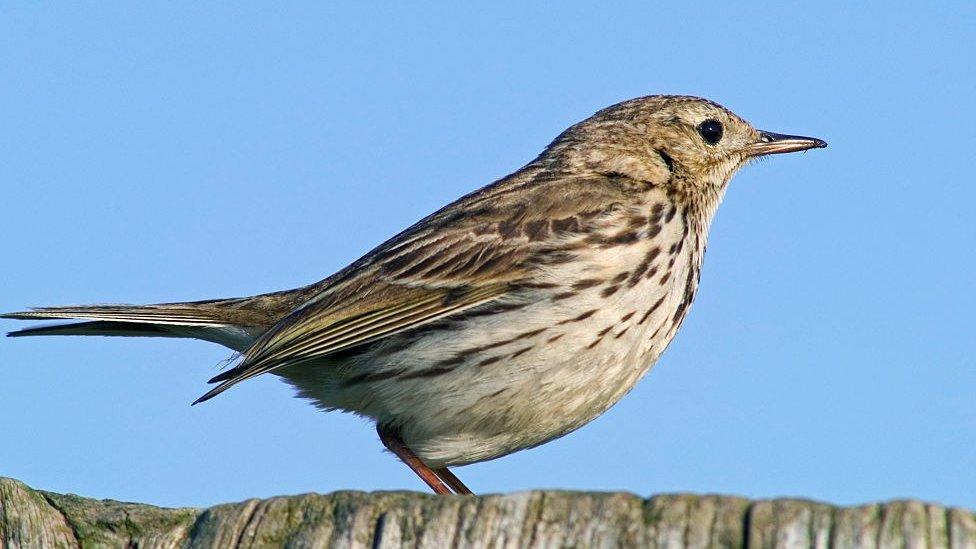
Wildfires can be devastating for ground-nesting birds like meadow pipits
The National Trust reduced sheep grazing on sites affected by the fire to diminish the grazing pressure.
Other interventions include planting seedlings to help areas where the heather is coming back slower or not at all.
They are working to make the area more resilient, including the possible reintroduction of cattle which graze on the "fuel" that makes fires even more dangerous.
Water supply
Strategic firebreaks are another part of the management plan.
"There are several habitats, those that are wetter, that are working well as natural firebreaks," says Mr Vinas.
Managing the landscape will be key to making it more resilient in the future.
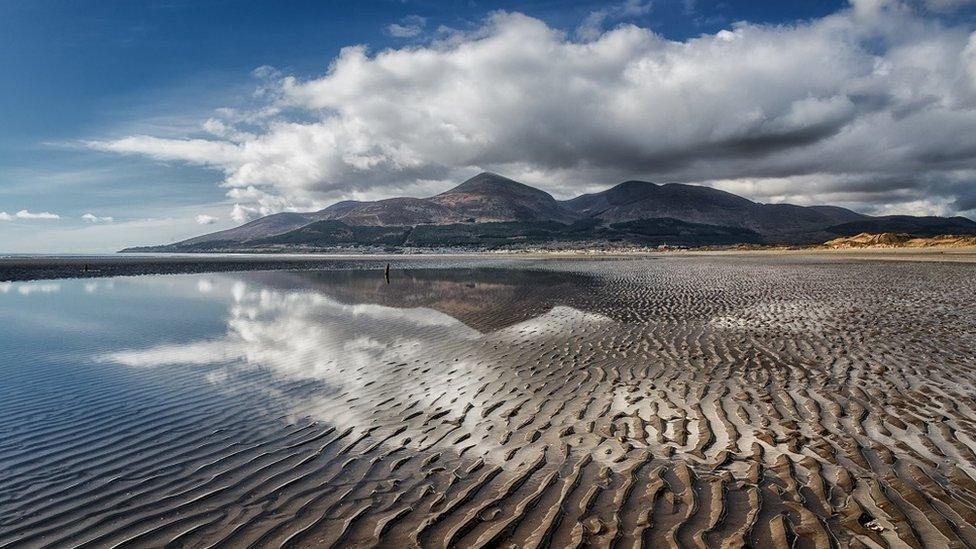
Slieve Donard in the Mournes is the highest peak in Northern Ireland
"We also need to get ready for the effects of climate change," he adds.
Experts have warned that rising temperatures increase the risk of wildfires in Northern Ireland.
Wildfires on peat soils can lead to large amounts of carbon being released into the atmosphere.
NI Water has warned that wildfires have an effect on water supply.
It controls 24 drinking water catchments, where water is collected by the natural landscape into rivers, lakes and streams.
"Wildfires within these catchments not only pose a terrible risk to all life but can remove the primary layer of vegetation, leaving the burned bare soil exposed to erosion which then makes its way into the reservoirs, from where water is abstracted for treatment to be drinking water," said NI Water's Rebecca Allen.
Jim Bradley says that while wildfires are always a worry, he and his team are "in it for the long haul".
"You can't be too despondent about what the future is, nor can you be too optimistic," he says.
"This is something that we're going to be managing for decades to come and we need to plan ahead."
Related topics
- Published21 July 2022
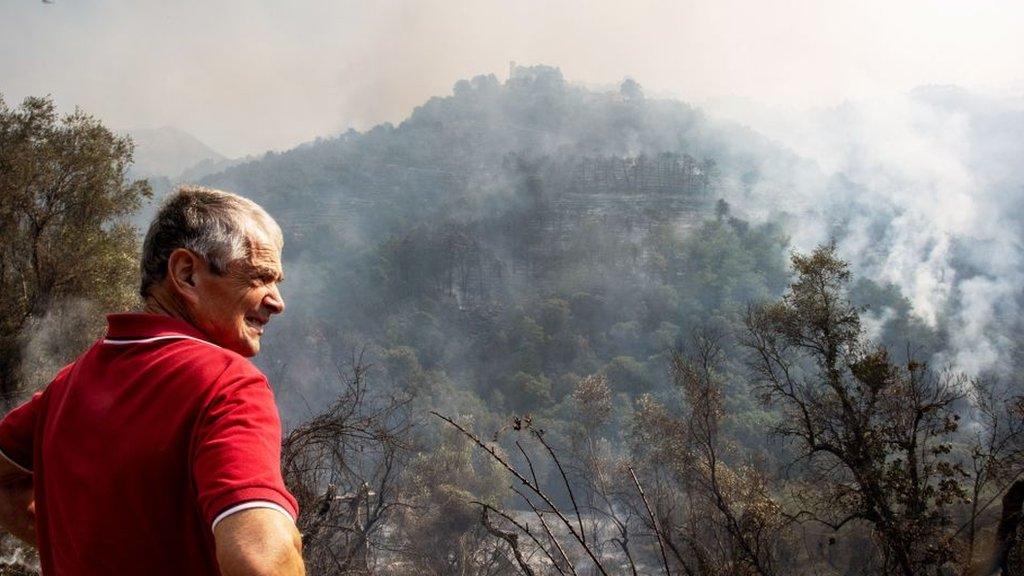
- Published22 March 2022
